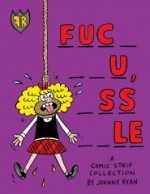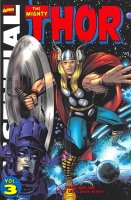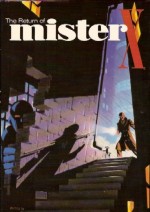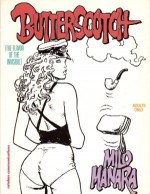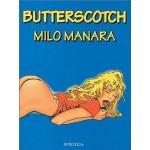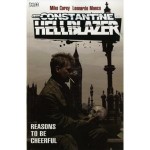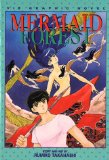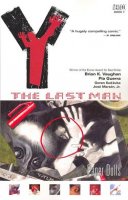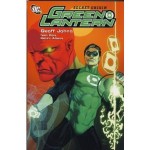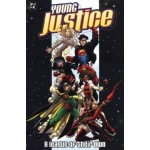
By Peter David, D. Curtis Johnson, Todd Nauck, Ale Garza & others (DC Comics)
ISBN: 978-1-84023-197-7
There are many facets that contribute to the “perfect mix†in the creation of any continuing character in comics. How much more so then, when the idea is to build a superhero team that will stand out from the seething masses that already exist? In the mid-1990s a fresh batch of sidekicks and super-kids started cropping up at DC after some years of thematic disfavour, and as the name and modus operandi of the Teen Titans was already established something new needed to be done with them.
But why were kid crimebusters back at all? Ignoring the inherent stupidity – and illegality if you acknowledge child-endangerment laws – of superhero apprenticeships for trainees who can’t even shave yet, why should callow champions appeal at all to comics readers?
I don’t buy the old line about giving young readers someone to identify with: the kids I grew up with all wanted to be the adult who drove the whatever-mobile, not a snotty smartass brat in short pants. Every mission would be like going to school with your dad…
I suspect it’s actually the reverse case: duffers like me with responsibilities and chores could fantasize about being powerful, effective and dangerously irresponsible: able to beat people up without having to surrender that hormone-fuelled, irredeemably juvenile frat-boy capacity for goofy fun that we’ve all missed ever since it finally died away…
After a delightfully cool try-out miniseries (see Justice League: World Without Grown-Ups) the latest crop of “ands…†soon stampeded into their own highly habit-forming monthly series. Also included in that introductory graphic novel collection was a subtly distressing tale wherein Robin, Superboy and Impulse rescued a young girl composed entirely of smoke and vapour from a supposedly benign federal agency: the Department of ExtraNormal Operations.
This second collection (repackaging issues #1-7 of the monthly comicbook with portions of Young Justice Secret Files #1) features fan-favourite writer Peter David scripting some inspired, tongue-in-cheek, gloriously self-referential adolescent lunacy, beginning with ‘Young, Just Us’ (illustrated by Todd Nauck & Lary Stucker) wherein the unlikely lads go for a sleepover in the old Justice League Secret Sanctuary and fall into a whole new career.
When a nearby archaeological dig uncovers an ancient New Gods Supercycle the boys are too busy vandalising the decommissioned mountain lair until the android Red Tornado objects. Before things become too tense the boys are called to the dig-site where DEO operatives Fite and Maad are attempting to confiscate the alien tech. After a brief skirmish with a fabulously mutated minor villain (transformed by a booby trap!) the bike adopts the kids and makes a break for it…
After a brief interlude with the pneumatically empowered Mighty Endowed the action switches to the Middle East for ‘Sheik, Rattle and Roll’ where the semi-sentient trans-dimensional cycle has brought Robin, Superboy and Impulse. Apparently uncounted years ago an Apokoliptian warrior named Riproar was entombed beneath a mountain after stealing the bike from New Genesis. Now the machine, enslaved to the thief’s ancient programming, is compelled to free the monster, but it has brought some superheroes to fight Riproar once he’s loose. Of course, they’re rather small heroes…
Hilariously victorious, the kids return to America just in time for Halloween and a riotous Trick or Treat time travel romp as meddling kids dabbling in magic snatch a nerdy Fifth Dimensional scholar out of his appointed place – endangering the entire continuum. Sadly, although YJ’s best efforts in ‘The Issue Before the One Where the Girls Show Up!’ restore reality they might have had a delayed bad influence on the quietly studious Master Mxyzptlk…
A bunch of chicks join the boys’ club in ‘Harm’s Way’ as writer David unerringly injects some dark undercurrents into the frenetic fun. Impulse’s sometime associate Arrowette (a second generation trick archer forced into the biz by her fearsome stage-struck mother) is being hunted by a psychotic youth who intends to become the world’s greatest villain and that aforementioned mist-girl Secret and the latest incarnation of Wonder Girl are dragged into the clinically sociopathic Harm’s lethal practice run before the assembled boys and girls finally manage to drive him off…
D. Curtis Johnson, Ale Garza & Cabin Boy then step in for ‘Take Back the Night’ as Secret leads the now fully-co-ed team in a raid against the clandestine and quasi-legal DEO orphanage-academy where metahuman kids are “trained†to use their abilities. It seems an awful lot of these youngsters aren’t there voluntarily or even with their parents’ approval…
‘First, Do No Harm’ (David, Nauck & Stucker) sees the return of the malevolent young nemesis as he invades their HQ and turns Red Tornado into a weapon of Mass destruction (that’s a pun that only makes sense after I mention that the Pope guest-stars in this tale). As the Justice League step in, the tale wraps up with a majestic twist ending…
The senior superstars are concerned about the kid’s behaviour and set a test, but since this is comics, that naturally goes spectacularly wrong in ‘Judgement Day’ as the ghost of alien horror Despero turns the simulation into a very practical demonstration of utter mayhem…
This terrific tome concludes with the edgy and hilarious ‘Conferences’ as the assorted guardians and mentors convene for a highly contentious parents/teachers evening, blissfully unaware that their boy and girls have snuck off for an unsanctioned – and unchaperoned – overnight camping trip together. As ever, it’s not what you’d expect but it is incredibly entertaining…
Teen issues and traditional caped crusading are perfectly combined with captivating adventure and deft, daft home-room laughs in this magical blend of tension and high jinks, comedy, pathos and even genuine horror in Young Justice.
The secret joy of sidekicks has always been the sheer bravura fun they inject into a tale and this book totally epitomises that most magical of essences. Unleash your inner urchin with this bright shiny gem and pray that now the kids have their own cartoon show DC will finally get around to releasing all the Young Justice tales in graphic novel collections.
© 1998, 1999, 2000 DC Comics. All Rights Reserved.

